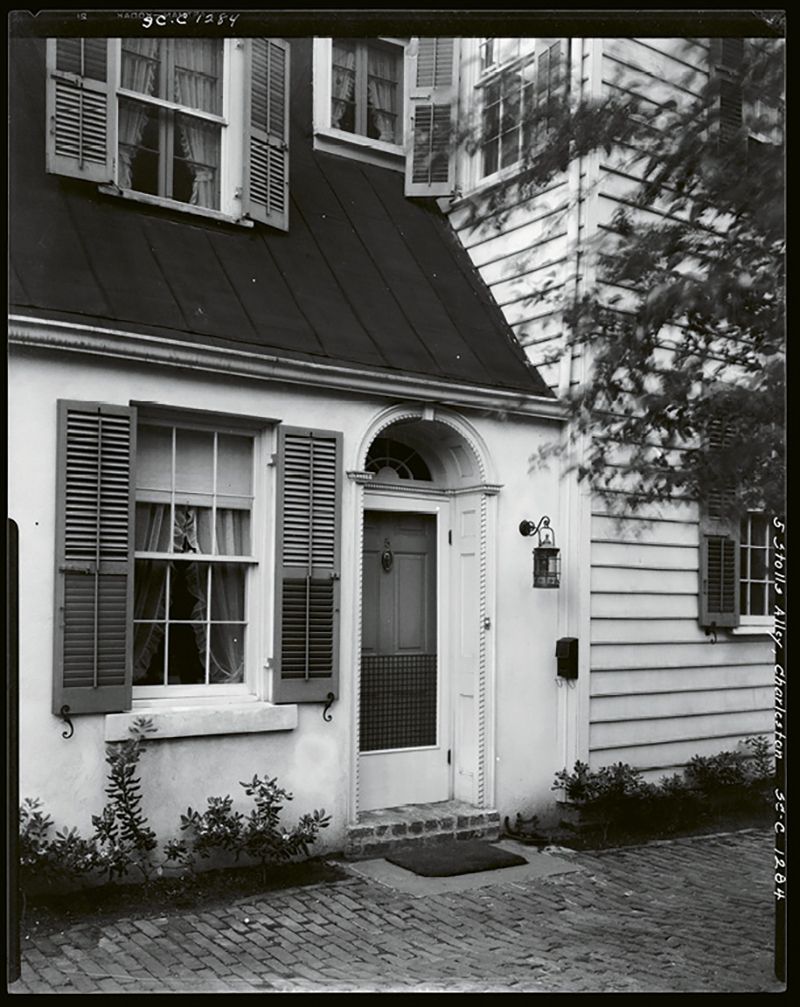
A 1929 photograph of 5 Stoll’s Alley, where Alida Canfield lived while restoring neighboring homes
Although it’s said Charleston never changes, its very name has, evolving from Charles Towne to Charleston. Its streets have transitioned, too: Friend became Legare; Charles is now Archdale; Calhoun was once Boundary. So don’t be surprised if there’s a proposal one day to revise the name of one of our earliest alleys to honor a 20th-century visionary.
Stoll’s Alley, between Church Street and the wharves of East Bay, was in use by the mid-1700s, when blacksmith Justinian Stoll lived and worked there. Humble folk populated the place in the 19th century, getting poorer as the city’s economy declined. It was a dirty, undrained lane when Alida (Mrs. George Dana) Canfield, of Charleston and Peekskill, New York, saw it and was taken by its possibilities.
Stories vary: One says she wanted to tear down a building to enlarge a garden on Church Street (not done); another states she was looking for a place to open an antiques shop (achieved). A third maintains she caught a glimpse into a residence as a woman pitched out trash, paid 50 cents for a better peep, and purchased it immediately.
But the fact is that starting in the late 1920s, she bought nearly all the brick and wood slums teetering on collapse and restored them—with plenty of help from an African-American master carpenter named Tom Pinckney. Like preservation pioneer Susan Frost on Tradd Street, Canfield revived a dying quarter. She got the city to pave it with bricks. Tourists, customers, and locals came; her daughters went on to establish their own shop there.
It’s all residential today; wisteria scents the street in spring and Confederate jasmine lingers longer than just about anywhere else in the city. A half-century after Alida Canfield’s death, the quiet alley enchants countless passers-through, paying perfect tribute to one dedicated citizen and her vision.
Photograph courtesy of Carnegie Survey of the Architecture of the South, Library of Congress, Prints & Photographs Division